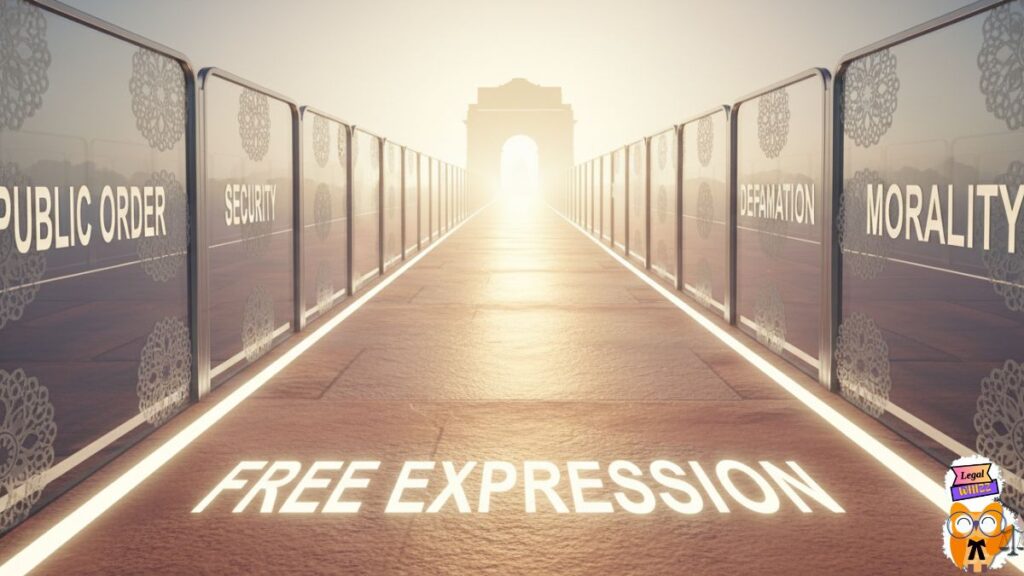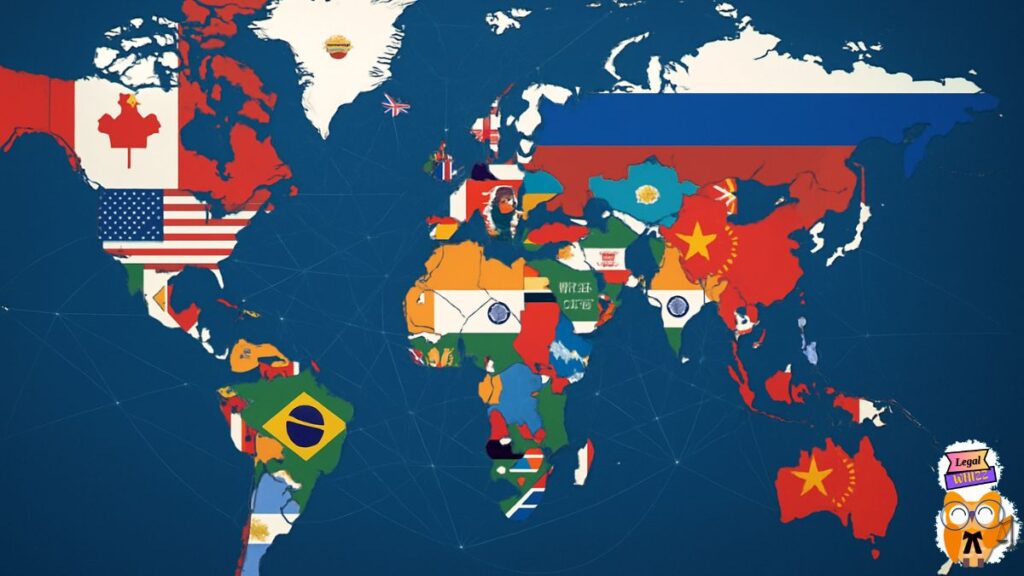Freedom of Speech in India: Balancing Rights & Hate Speech Laws (A 2025 Guide)
Table of Contents
- Freedom of Speech in India: Balancing Rights & Hate Speech Laws (A 2025 Guide)
- What is Freedom of Speech and Expression in India?
- Limits on Freedom of Speech in India: The “Reasonable Restrictions”
- Landmark Cases Shaping Freedom of Speech in India
- The Rise of Hate Speech and India’s Legal Arsenal
- A Free Press? The State of Freedom of Speech in India in 2025
- A Global Perspective on Freedom of Speech
- The Core Dilemma of Freedom of Speech in India: Protection vs. Harm
- Frequently Asked Questions (FAQ)
- Conclusion: The Path Forward for Free Speech in India
Authored by: Bhumika Tewari
As a fourth-year student at Vasudev College of Law, Bhumika Tewari is a passionate legal learner with a keen interest in criminal and corporate law. She is translating her academic knowledge into practical expertise through experience in legal drafting and moot courts.
Edited By: Vikramaditya Buddhist
Where does India draw the line between a controversial opinion and a criminal offense? In a vibrant democracy, the freedom to express one’s views is not just a right but the very foundation of public discourse. However, this freedom is constantly tested by the challenge of hate speech, which can threaten social harmony and incite violence. This guide explores the intricate legal framework governing freedom of speech in India, from its constitutional guarantees and landmark court cases to its ongoing battle with hate speech and the global context that shapes this critical debate.
What is Freedom of Speech and Expression in India?
Freedom of speech and expression is an indispensable element of a democracy. The Indian Constitution guarantees this fundamental right to its citizens under Article 19(1)(a). This right is broadly interpreted to mean the right to express one’s own convictions and opinions freely. This expression can take many forms, including:
- Words of mouth
- Writing
- Printing
- Pictures
- Any other mode
Limits on Freedom of Speech in India: The “Reasonable Restrictions”
While the freedom of speech in India is a fundamental right, it is not absolute. The framers of the Constitution intended to strike a balance between individual liberty and the larger interests of the community and country. They believed it was essential to permit the state to impose “reasonable restrictions”.

This power is granted to the State under Article 19(2) of the Constitution. The grounds on which these restrictions can be imposed are specific and include:
- Security of the State
- Friendly relations with foreign States
- Public order
- Decency or morality
- Contempt of court
- Defamation
- Incitement to an offense
- Sovereignty and integrity of India
Landmark Cases Shaping Freedom of Speech in India
Over the decades, the Indian judiciary has played a crucial role in interpreting the scope and limitations of freedom of speech in India.
- S. Rangarajan v. P. Jagjivan Ram (1989): : In this pivotal case, the Supreme Court held that the fundamental freedom under Article 19(1)(a) can only be restricted for the purposes mentioned in Article 19(2). The Court emphasized that any restriction “must be justified on the anvil of necessity and not the quicksand of convenience or expediency”.
- Shreya Singhal v. Union of India (2015): Shreya Singhal v. Union of India (2015): This historic judgment significantly protected online freedom of speech in India by striking down Section 66A of the Information Technology Act. The Court found the section unconstitutional because it went beyond the permissible restrictions of Article 19(2). It penalized speech that did not have a “proximate nexus with an explicit danger or threat to public order, national security, or any other legitimate state interest”.
The Rise of Hate Speech and India’s Legal Arsenal
One of the most significant challenges to freedom of speech in India is the proliferation of hate speech. Hate speech is defined as any form of communication—be it in speech, writing, or behavior—that attacks or uses demeaning and discriminatory language against a person based on their religion, ethnicity, nationality, or other identities.
To combat this, Indian law has framed several provisions. Under the new Bhartiya Nyaya Sanhita (BNS), 2023, specific sections are designed to prosecute expressions that:
- Incite enmity
- Insult religious sentiments
- Provoke violence
Key provisions include Sections 196, 299, and 353 of the BNS. These laws reflect a carefully crafted balance between safeguarding individual liberties and protecting broader societal interests.
For fans of true crime, watch now: The Dark Secrets That Haunt Nithari Even Today.
A Free Press? The State of Freedom of Speech in India in 2025
The health of a democracy is often measured by the freedom of its press, a key component of the broader freedom of speech in India. However, the current scenario presents a complex picture.
According to data released in 2025, India ranks 151 out of 180 countries in the “World Press Freedom Index“. While this is a slight improvement from the previous year’s rank of 159th, the situation is still categorized by RSF as “very serious”. Key challenges impacting press freedom include.
- Media as a Business: Journalism has increasingly turned into a business rather than a profession. Many media houses openly promote the views of specific political parties or personalities.
- Concentration of Power: This concentration of media ownership has stifled independent journalism.
- Vulnerability of Local Journalists: Local-language media have suffered significantly, with journalists facing low pay and difficult working conditions.
A Global Perspective on Freedom of Speech

The challenge of balancing free speech and hate speech is a global one, with each nation adopting an approach shaped by its unique legal and cultural history. Understanding these different models provides valuable context for the ongoing debate about the freedom of speech in India.
| Country | Core Principle | Key Legislation/Case Law | |
| USA | The right to free expression is strongly protected by the First Amendment. | Speech can only be restricted if the speaker intends to incite violence and there is a reasonable expectation that it will occur shortly, as established in | Brandenburg v. Ohio (1969). |
| Canada | The Charter of Rights and Freedoms guarantees free expression but allows for legitimate restrictions under Section 1. | The Supreme Court upheld the crime of publicly inciting hate in | R v. Keegstra (1990), deeming it a legitimate restriction on free speech. |
| UK | Hate speech laws are found in several statutes. | The Public Order Act 1986 prohibits expressions of racial hatred, and the Equality Act 2010 also contains relevant provisions. | |
| China | Article 35 of the Constitution grants citizens freedom of speech, but it is not arbitrary. | Article 249 of the Chinese Criminal Law imposes legal repercussions on anyone who incites racial hatred or prejudice, reflecting China’s policy of regulating speech to maintain social stability. | |
| France | The Declaration of the Rights of Man and of the Citizen (1789) considers freedom of expression one of the most valuable human rights. | France’s penal code and press regulations prohibit incitement to discrimination, hatred, or violence based on origin, religion, gender, etc.. |
The Core Dilemma of Freedom of Speech in India: Protection vs. Harm
The debate between safeguarding free speech and controlling hate speech is one of the most prominent in constitutional law today. The problem lies in balancing two opposite risks when regulating the freedom of speech in India.
- The Risk of Over-Regulation: When a government begins to put too many limits on what can be said, the open dialogue that is essential for a democracy can get choked. This can instill fear in citizens, preventing them from speaking out against wrong actions and thereby destroying democracy.
- The Risk of Under-Regulation: If there is too much freedom for harmful or hateful speech, it can create tension, spread hatred, and disturb peace and fairness in society. For marginalized groups, true freedom of speech is often silenced by hate speech.
The difficulty lies in defending people’s freedom of speech without allowing it to cause harm to others.
Frequently Asked Questions (FAQ)
Q1: Is freedom of speech an absolute right in India?
A: No, it is not an absolute right. The right to freedom of speech and expression is subject to “reasonable restrictions” provided under Article 19(2) of the Constitution. The framers intended to balance individual liberty with the interests of the community.
Q2: Can I be prosecuted for a social media post in India?‘
A: Yes. While Section 66A of the IT Act was declared unconstitutional, other laws can still apply. If a post is deemed to incite enmity, insult religious sentiments, or provoke violence, it can be prosecuted under provisions of the Bhartiya Nyaya Sanhita (BNS), 2023.
Q3: What is the main difference between the US and Indian approach to free speech?
A: The US First Amendment provides very broad protection for speech, which can only be restricted if it is intended to and likely to incite imminent lawless action. India’s approach, under Article 19(2), allows the state to impose “reasonable restrictions” on a wider variety of grounds, such as public order, security of the state, and friendly relations with foreign states.
Q4: How does hate speech affect democratic discussion?
Hate speech and incitement should not be tolerated because they do not serve a democracy. Such behavior can scare people into leaving the conversation, which prevents the kind of democratic discussions that are needed. For marginalized groups, hate speech can effectively silence them, undermining true freedom of speech in India for all.
Conclusion: The Path Forward for Free Speech in India
The freedom of speech in India is a cornerstone of its democracy, but it is not a license for hate speech or inciting violence. The ultimate goal is to protect people from harm while fostering an open and vigorous public debate. Achieving this delicate balance is not easy. It requires fair laws, respectful conversation, and a society that values both freedom and fairness. Each society must find this balance based on its own history and values. The challenge is to open up public discourse to criticism without also opening it up to destructive attacks, ensuring that more democratic discussions can take place without offensive behavior driving people away
Uncover the complex history and profound significance of reservation in India.
